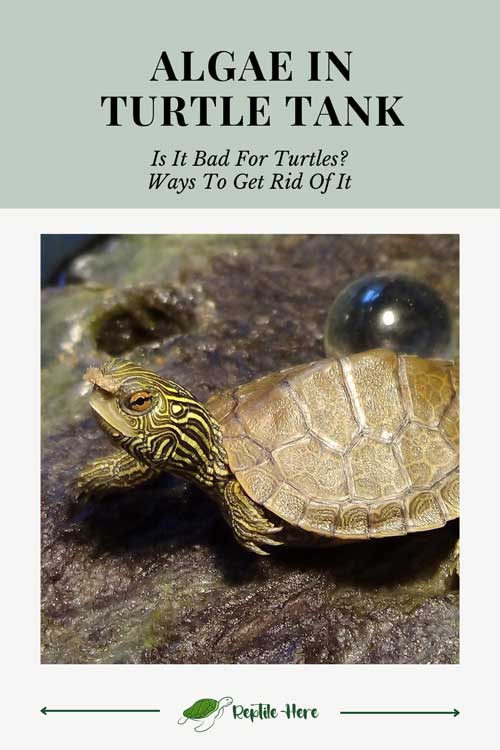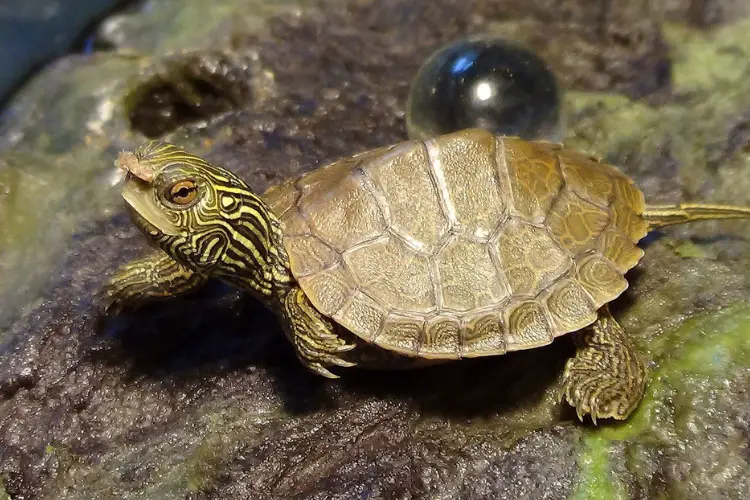Algae In Turtle Tank: Is It Bad For Turtles? Ways To Get Rid Of It
So, lately, you’ve noticed some green stuff in your turtle tank? That’s algae! But is it harmful to your turtle pets living inside the aquarium?
Is Algae in turtle tank bad? Little algae amounts inside the turtle tank are fine and won’t harm your pet turtles. But algae overgrowth is bad for your pet’s health and can even start growing on their shells.
In this guide, you’ll discover more details about why alga isn’t good for your turtle tank, how to get rid of it, and measures to prevent it from growing in your turtle tank.
Is algae OK in turtle tank?
Contents
Algae is okay in your turtle since it doesn’t harm your turtle in any way. However, that doesn’t mean that you should let it grow in your tank such that it grows into uncontrolled amounts.
If you let it overgrow, it may lead to water quality issues, especially high nitrates. This is especially the case for brown algae.
Algae become harmful to your turtle only when it builds up on its shell. In this case, it can block maximum absorption of UVB light and heat when your turtle is basking.
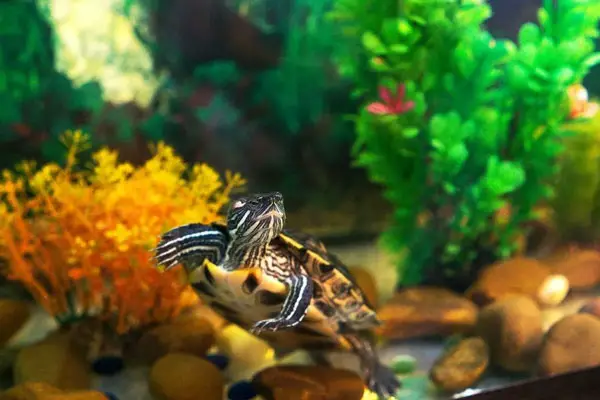
Though rare, the algae may also start growing under your turtle’s partially shed scutes, which may lead to shell rot, one of the serious shell infections that affect captive turtles.
If you notice long, strongly, slimy algae growing on your pet turtle shell, you should take action as soon as possible to eliminate it.
Why is my turtle tank getting algae?
Your tank is getting algae due to the presence of your turtle waste, which is the source of algae nutrients.
Tanks too small are highly likely to cause high concentrations of waste, promoting increased algae growth.
That’s why an ideal turtle tank should hold at least 10 gallons of water for every inch of the turtle species you keep—the larger, the better.
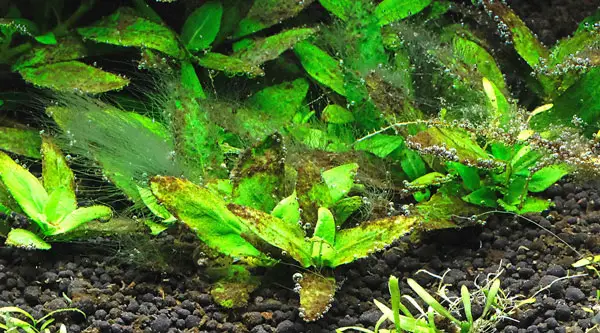
With this in mind, your full-grown turtle should be housed in a tank with more than 100 gallons capacity.
For a too-small tank, maintaining good water quality becomes a challenge, which puts your turtles’ health and well-being at risk.
How do you eliminate algae stuck on your turtle tank and décor?
Any algae that have already grown on your turtle tank walls and décor can prove stubborn to remove.
However, with the right tools and procedures, you can easily get rid of it and leave your tank looking as clean as new.
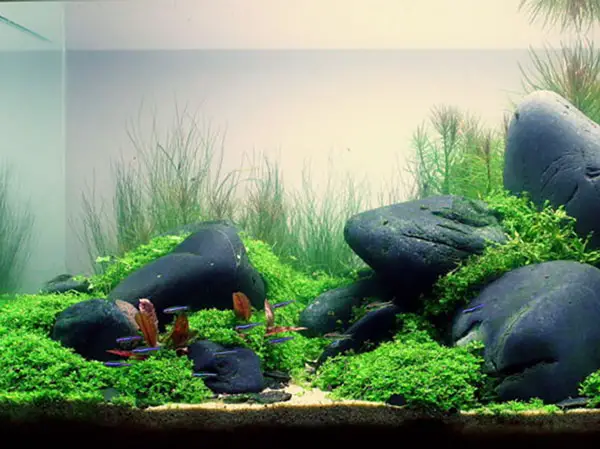
This is how you remove stuck-on algae in your aquarium:
Scrap it off
One way to remove the stubborn algae is by scraping it off. You can do this with the help of algae scrapers which safely remove the stuck-on algae without damaging your glass or acrylic aquarium.
Scrub the algae off
If the large rocks and other decorations inside your turtle tank are infested with algae, remove them from the tank and try scrubbing off the alga.
Vacuuming can help
Try vacuuming the gravel seated at the bottom of the tank every time you make water changes in your tank. You can easily find good vacuum cleaners that do a good job vacuuming the gravels, excellently removing any algae attached to them.
If your turtle shell has some algae stuck to it, this informative video shows you how to safely get it out
WARNING: There are many chemicals/algaecides for killing algae from fish or turtle tanks, but we don’t recommend using them as they’re toxic for your exotic pets. Practicing good aquarium hygiene is a safer practice than using those harsh chemicals.
How to prevent algae in turtle tank?
We recommend against encouraging alga overgrowth in your tank, but how do you keep it under control? These key tips will help ensure the algae growth in your tank:
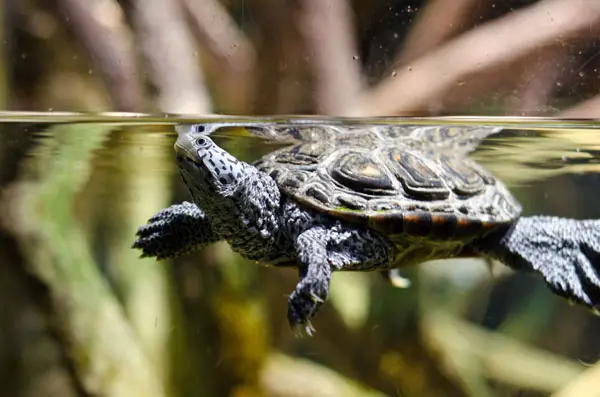
Practice good aquarium hygiene
Proper aquarium hygiene is key to preventing the overgrowth of algae in your turtle tank. You can keep your tank clean by practicing good hygiene by making partial water changes weekly (be sure to change 1/8th of the water in the tank every week).
Invest in a strong filter
You also need a stronger and more efficient filter, preferably a canister filter for your turtle tank. We advise you to get a model rated 3-4x the size of your actual tank.
Turtles are generally messy, and having such a powerful filter guarantees their environment stays clean. Algae growth will reduce drastically with a clean tank and no waste hanging around.
Use aquarium salt
This is another way to clean your turtle tank water and prevent algae growth. Aquarium salt will also enhance electrolytes in the tank water, helping prevent algae growth while promoting healthier tank water.
Add algae eaters to your tank
You can introduce fish and snails that feed on algae in your turtle tank. But remember that many turtles feed on algae, so you want to ensure your algae eater doesn’t become fish for your pet. These helpful animals will feed on alga growth and prevent it from overgrowing.
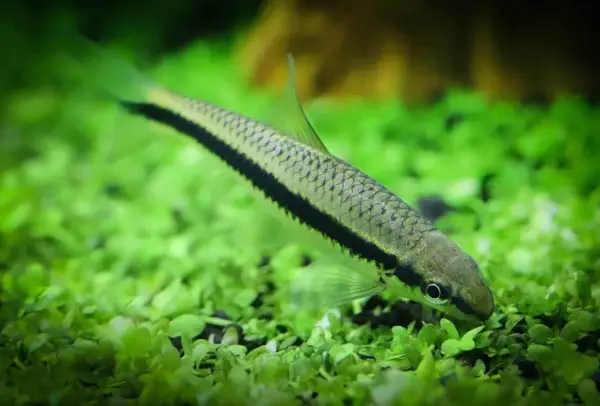
Also read: Can Turtles Flip Themselves Over?
Introduce live plants
Live plants inside a turtle aquarium can help starve the algae, thus preventing their growth. Plus, these plans will make your tank even more attractive.
Shield your aquarium from too much direct sunlight
Exposing your aquarium to direct sunlight for long hours can encourage algae growth. Thus, if you’re leaving your tank in sunlight, be mindful of the amount of time you leave it there.
What eats algae in a turtle tank?
Animals that eat algae include fish, shrimps, and snails—collectively known as the algivore.
These animals feed on algae as well as phytoplankton. They are a great deal for any fish or turtle tank owner who wants to keep algae growth under control.
Go with these animals if you want a natural way to control algae growth in your turtle tank. But remember that your turtle may eat them, so you’ll need to keep replacing them continuously.
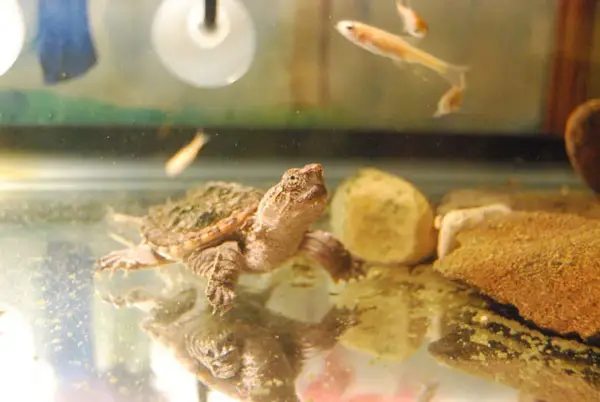
You’d also want to go with the cheap algae eaters, so you don’t spend a lot of money due to frequent or continuous replacements.
FAQs:
It is perfectly normal for turtles to have algae because turtle waste inside the tank provides the nutrients needed for algae to grow. Exposure to direct sunlight further offers ideal conditions for algae growth.
Algae isn’t good for turtle shells as it can get in the way and prevent proper absorption of sunlight. It can also grow under the partially shed scutes, resulting in water accumulation. A shell rot may develop as a result, though this is quite rare.
Your turtle tank turns green so fast due to an algae bloom. This occurs when there are plenty of nutrients (produced by turtle waste) and direct sunlight exposure in the tank. These offer favorable conditions for the algae to multiply quickly and fill the water. As a result, your tank water will turn cloudy green.
Related: Bubbles In Turtle Tank
Final Word
The algae in your turtle tank should not send you into panic mode. It’s completely normal in turtle aquariums and has no harmful effects on your pet turtles. It is simply caused by tank waste which provides nutrients necessary for its growth.
Completely removing algae from your turtle tank can be challenging as it keeps showing. However, we encourage you to keep its growth under control to ensure it doesn’t harm your turtle’s health, especially when it starts growing on its shell.
